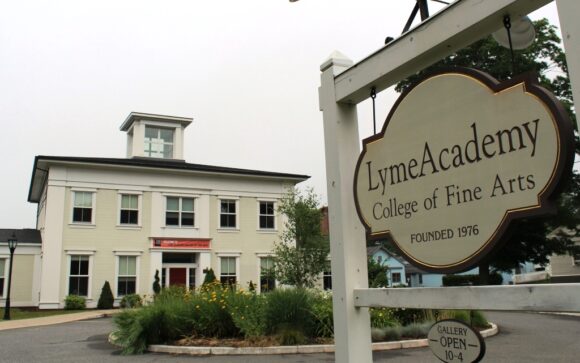
The future of the Lyme Academy of Fine Arts is one of the big, unanswered questions in Old Lyme at the moment.
In July 2014, the University of New Haven (UNH) announced an “affiliation” with what was then Lyme Academy College of Fine Arts in a move that was perceived as likely saving the college from possible closure due its critical financial difficulties. University of New Haven President Stephen Kaplan said at the time, “We are determined to protect and preserve the mission of Lyme Academy College, retaining the unique qualities that appeal to students seeking an arts degree in an idyllic, rural setting that nurtures creativity,”
Just five short years later, in a move that generated both shock and anger, UNH announced it was pulling out from the college saying it would continue its involvement through the end of the 2018-19 academic year and then divest itself of the institution. The announcement was made in late August 2018 just as the BFA Class of 2022 was days away from starting their studies, leaving those freshmen students registered at a degree-granting college that would not exist past the end of their first year.
Since that announcement back in August 2018, there has been sparse official communication from either UNH or the Lyme Academy College Board of Trustees as to what is happening to the facility. This has led to rumor and speculation regarding the future of the academy in Old Lyme and beyond.
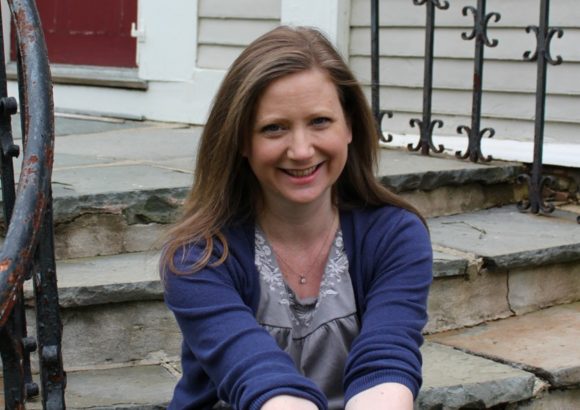
But all through this period of uncertainty, a group of alumni led by Kimberly Monson, who is both an alumna of the College and now a teacher there, has been fighting hard to keep the Academy (‘college’ has now been dropped from the name) as a going concern. Monson is passionate about the mission of the academy to which President Kaplan referred, believing in it with a similar conviction to the academy’s founder, the acclaimed sculptor and musician Elisabeth Gordon Chandler.
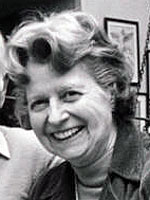
Chandler, who was one of Monson’s teachers, founded Lyme Academy of Fine Arts back in 1976 because she was determined to preserve the traditional skills of figurative and representational art, which she felt at that time were in danger of disappearing with the explosion of contemporary art. Chandler’s mission was to educate aspiring artists through a rigorous studio curriculum similar to that followed by the Great Masters.
The Academy became a degree-granting college in 1996 and in 2002 added the word ‘college’ to its name, but, all the while, retained its focus on those traditional skills. The curriculum has always included classes in anatomy and perspective, which have become increasingly rare to find in art schools in the past 40 years.
Monson told LymeLine.com this week that she now finally sees a way forward for Lyme Academy of Fine Arts. The first part of the plan is to “disentangle” itself from UNH, which is no straightforward task. The 2014 agreement between the two institutions has not been made public and working out who owns what in terms of the facilities, finances, intellectual property and more is believed to be a both ongoing and complex task. That piece has to be concluded for Lyme Academy to stand proud once again as an independent institution, and timing on when the official ‘separation’ will occur is unclear.
The second piece is the employment of a director for the new institution. The position has been advertised and an announcement on the appointee is expected shortly. Monson believes this will be a major step in re-establishing the academy on a firm footing.
The third and final step is the development of an extensive summer program, which hopefully will provide what Monson describes as “a pathway to sustainability.” Monson and her husband, fellow alumnus and College teacher Michael Viera, have created the program, which kicks off May 29, by working long hours and giving it intense commitment while still fulfilling their current College teaching roles.
There are three segments to the summer program, namely Middle School, Pre-College and Adult.
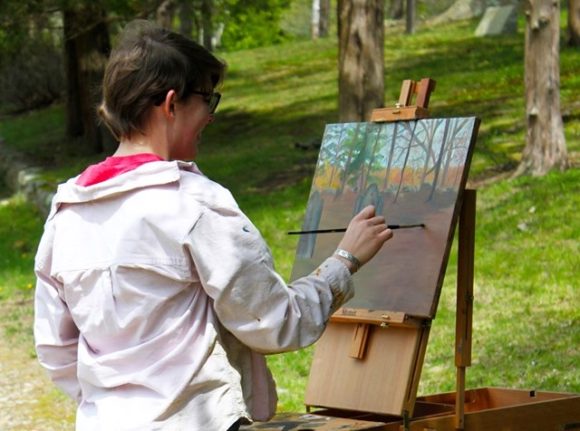
Monson explains that the Middle School Academy is a new venture and something she identified as a real need for that age-group. She points out, “Artists took apprentices of middle school age,” so there is no question that students of that age are ready to learn art fundamentals “in a respectful manner” but laced with fun and physical activity.
Over four weeks, four artists will be studied — one per week — in an exciting, exploratory fashion, which will include learning skills in painting, sculpture, pastels, drawing, collage, and storytelling. Students can enroll in any or all of the week-long programs, which begin July 8 with Edgar Degas, then follow with Michelangelo (July 15 ), Salvador Dali (July 22) and end with Leonardo da Vinci (July 29.) Timing for the Monday to Friday program is 9 a.m. to 3 p.m. and the fee for each week is $325.
The Pre-College Academy is an experience in which Monson says, “high school students are treated like college students.” and “immerse themselves in intensive workshops” for a week on each topic. Students will not only expand their portfolios but also gain a significant advantage over their peers when they enter college.
There are eight programs on offer: sculpture, drawing, oil painting, illustration essentials, world building, animation, toy sculpture, and concept building. Students can register for any number of classes from one to all eight and fees are $350 or $375 depending on the class.
Adult classes range from ‘Open Figure Drawing’ on Saturday mornings to ‘Expanding your Encaustic Horizons’ (July 29-31) to ‘Three Dimensional Forms Meet Wax’ (Aug. 1-2). Other programs include an ‘Etching Workshop’ (June 10-14), ‘Sunset Painting’ (Wednesdays, May 29- June 26) and ‘Watercolor’ (Tuesdays, June 18- July 23).
Master Class Workshops include ‘Walking Tour Townscape Painting Workshop with Michael Viera,’ which Monson describes as a “destination week,” takes place Aug. 19-23 from 9 a.m. to 4 p.m. daily. Viera, an accomplished and award-winning artist, will lead his students in the footsteps of the Old Lyme Impressionists and ‘paint the town’ This tour will be enhanced by talks from the Old Lyme Historical Society and a visit to the Florence Griswold Museum.

Two more Master Class Workshops are being offered — ‘Classical Drawing Boot Camp‘ with Rick Lacey (July 15-19), ‘Printmaking’ with Nancy Friese in June, and ‘Animal Sculpture‘ with John O’Reilly (June 24-28). Both teachers are extremely talented artists with multiple awards between them. Lacey is a graduate of both Lyme-Old Lyme High School and Lyme Academy College of Fine Arts. O’ Reilly has a B.F.A. from Columbus College of Art and Design and an M.F.A. from the New York Academy of Art.
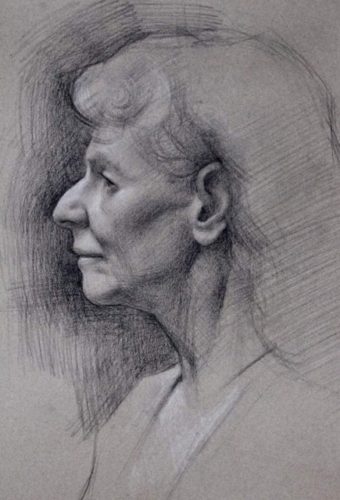
Based on the Atelier model, the week-long Classical Drawing Boot Camp, which starts July 15, concentrates the student in lengthy study through direct, focused observation. The morning session is dedicated to the art of cast drawing. Measurements, comparisons and intense analysis emphasize the structure necessary for drawing. The afternoons are dedicated to the study of figure drawing from a life model in a continued pose. Attention is paid to set up and final execution over the course of a week.
Sculpting animals is a time honored tradition to which the Animal Sculpture Master Class (starting June 24) pays homage. The founder of Lyme Academy, Elisabeth Gordon Chandler, began her art career sculpting her beloved dog to cope with her grief after he passed away. Sculpting an animal from direct observation is an invaluable learning opportunity. Comparative anatomy, overall structure and form variations will be explored while choosing the proper gesture or behavior to suit your vision. Workshop participants will sculpt live from a horse or a dog.
Monson urges people considering applying for classes to enroll soon since classes are filling fast. She says with the deep-seated passion of a life-long artist, “People should take time to invest in themselves. They should come learn about their capabilities … learn about what they can do and didn’t know they could do.”
Stressing that all the teachers of these classes are “really good people,” Monson explains this means that not only are they outstanding, established artists, but also that they are dedicated to the Academy and “will put it in its best light.” Many of the teachers, like Monson and Viera, are alumni of the College, the majority of whom have gone on to obtain an MFA at another college. The Middle School Academy is being taught primarily by 2019 graduates of Lyme Academy College.
Regarding the future, Monson says her immediate goal is “to populate the campus” during the summer programs and thus breathe vitality and enthusiasm back into the Academy. She does not know details of the post-summer plans, but says with conviction, “We deserve to be here because we have so much to offer.” She believes talks with other institutions are ongoing to see where Lyme Academy might find a synergistic relationship or determine if credits from Lyme Academy might be transferable into a degree-granting institution. Monson also thinks discussions with the Town of Old Lyme are continuing despite the rejection by the Town of the Academy’s application for $90,000 in the 2019-20 fiscal year.
Her unequivocal objective — and that of all the other alumni and board members working hard to find a solution for Lyme Academy once it is separated from UNH — remains “to give it [the Academy] a long-term pathway to success.”
Editor’s Note: Full details of these summer programs including instructors, dates, times, fees, and enrollment information can be found on Lyme Academy’s new website at this link. For further information about these summer programs, contact Kristen Brady by email at kbrady@lymefs.newhaven.edu or telephone at 860-598-5143.